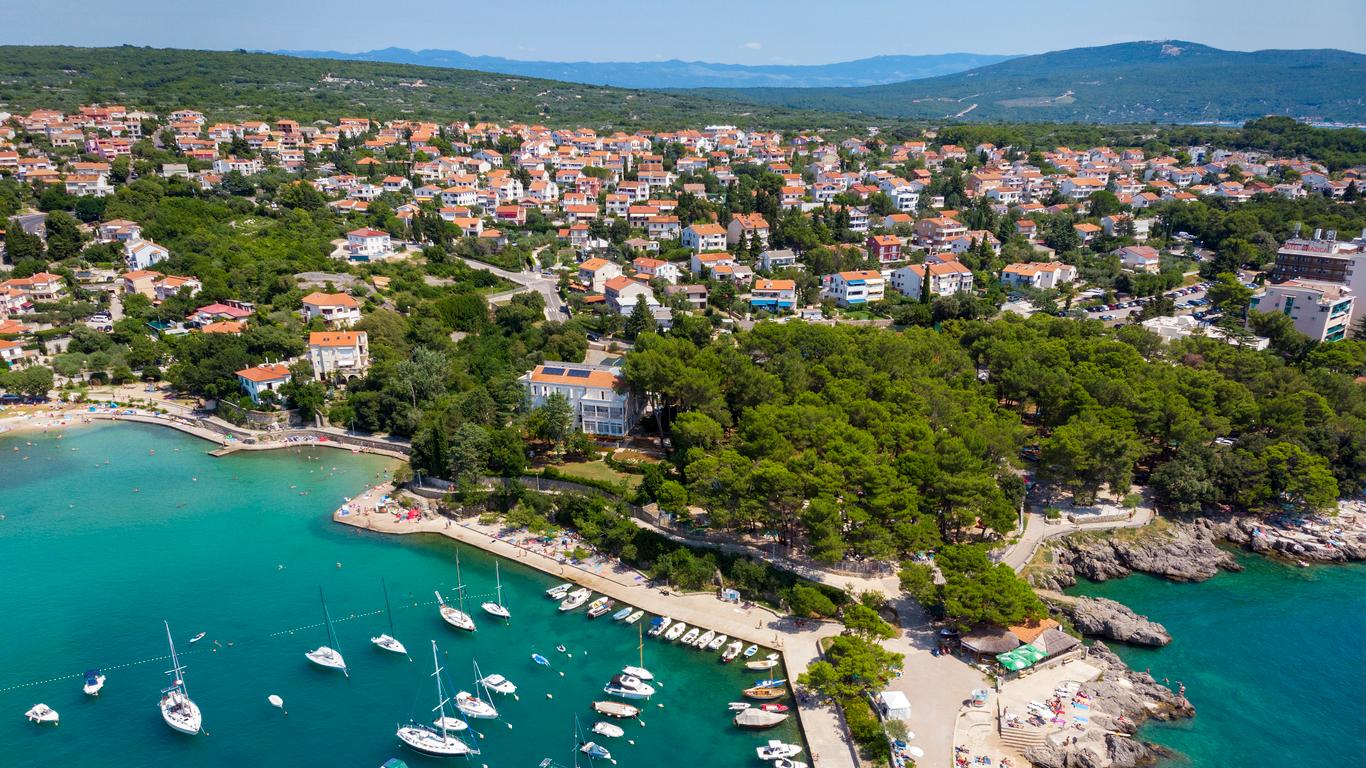Perched on the south-west coast of Krk Island, Krk is one of the oldest settlements on the Adriatic coast. It was inhabited by the Illyrians and the Romans before becoming part of the Byzantine Theme Dalmatia and exhibits several medieval fortifications to this day.
Things to do in Krk
Stroll through Krk to admire its ancient landmarks, which include the former Roman training field of Kamplin Square and beautifully preserved city walls that date back to the 1st century BC. Marvel at the 5th-century Krk Cathedral and soak up the Adriatic Sea views from the 12th-century remains of Frankopan Castle.
In a protected bay just east of Krk is the tiny island of Košljun, which is home to the Franciscan monastery or St. Mary's. A statue of St. Francis with a wolf is featured on the main jetty, while antique farming and fishing equipment is on display at the monastery’s ethnographic museum. Don’t miss a visit to the 12th-century Benedictine church where religious artefacts, old masters paintings and works by contemporary Croatian artists are exhibited.
In the north of Krk Island is Biserujka, a spectacular karst cave that’s decorated with whimsical stalactites and stalagmites. You can join a guided tour to learn about the cave’s geological formation and the unique species that inhabit it or attend one of the live music concerts that are regularly held in its “Great Hall”.
Getting around Krk
Rijeka International Airport is a 30-minute drive from Krk and has flights to destinations across Europe while Zagreb is just over two hours away by road. Ferries connect from the nearby port at Valbiska to Lopar on the island of Rab. The centre of Krk is compact enough to explore on foot, although having your own car or scooter is best for exploring the island.





